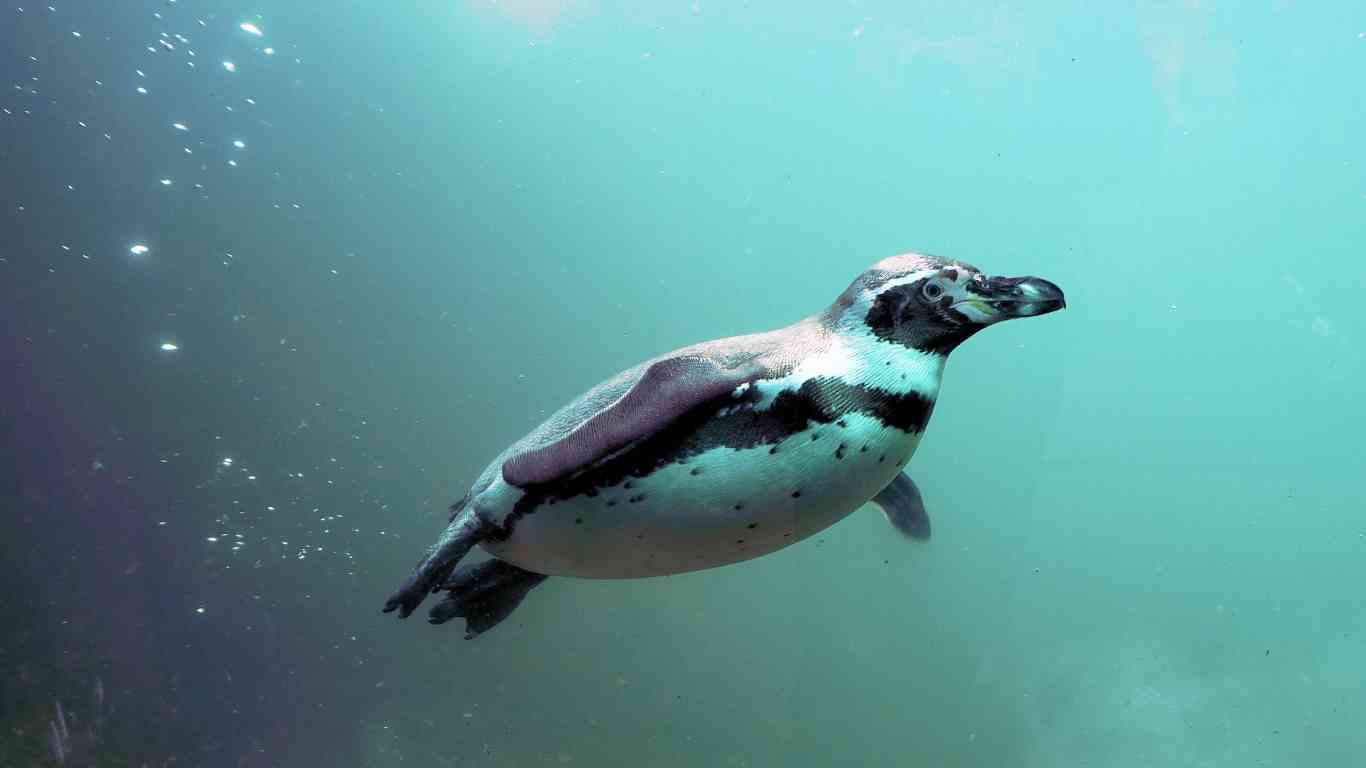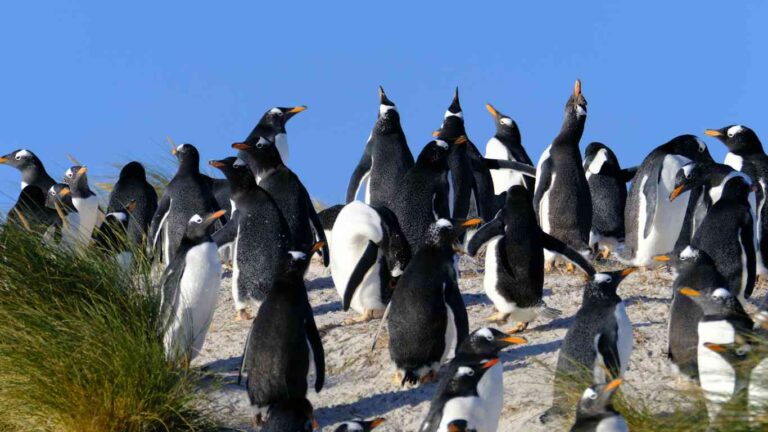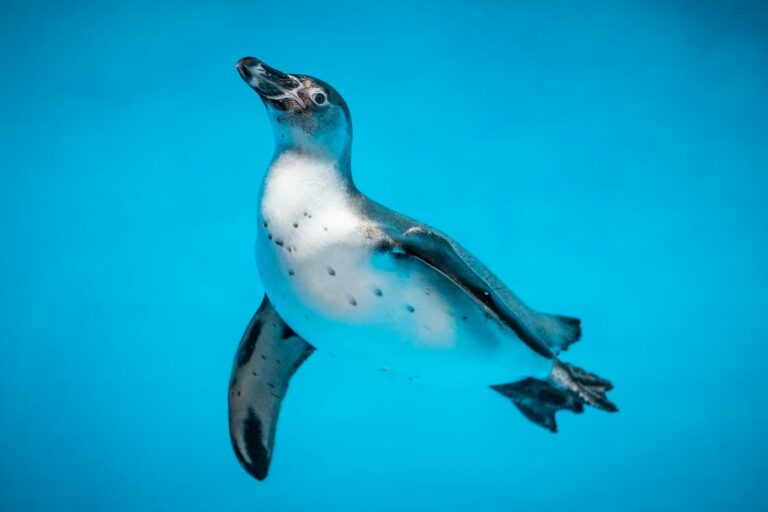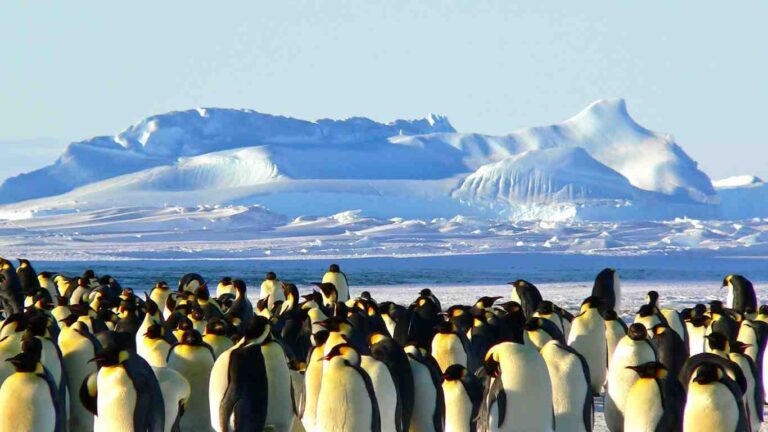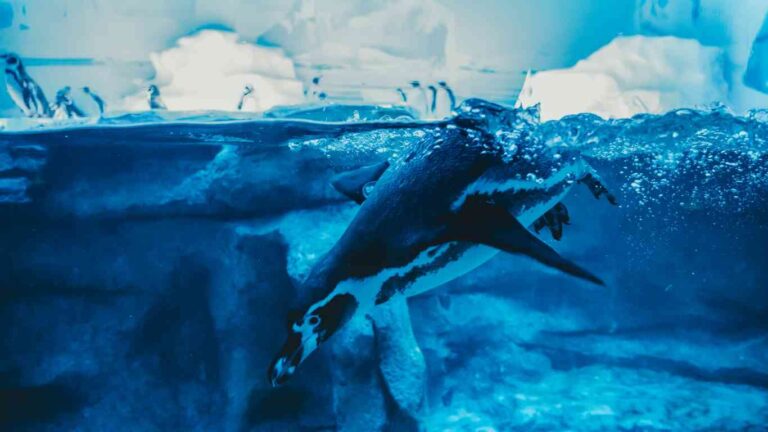What Do Penguins Drink to Stay Hydrated?
Penguins’ ability to survive in some of the most unforgiving climates on Earth is directly linked to their understanding of what they drink.
Penguins are a group of aquatic, flightless birds predominantly living in the Southern Hemisphere, particularly in Antarctica.
One would assume that with such an abundance of water around them, they have no issues with staying hydrated.
However, the type of water present in their environment poses an issue that they have evolved to overcome.
What Do Penguins Drink?
Penguins primarily drink seawater and are equipped with a special gland near their eyes, the supraorbital gland to filter out salt from their bloodstream.
While most land-dwelling animals are unable to consume saltwater due to the dehydrating effects of salt, penguins have a unique adaptation that allows them to handle this diet.
This specialized supraorbital gland functions to filter out the salt from their bloodstream which is a process connected to their renal system. The filtered salt is then expelled from their body through their beaks or sneezed out.
The supraorbital gland is often compared to a desalination plant. It is a biological marvel allowing them not just to survive, but to thrive in saltwater environments without suffering from dehydration.
The process occurs continuously, ensuring that these resilient birds maintain their fluid levels despite the salty water they ingest.
How Do Penguins Drink Water?
Penguins drink water by eating snow or dipping into the ocean, then they filter out the salt using specialized glands near their eyes, expelling excess via sneezing or dripping.
Penguins don’t often drink like many other animals. Truthfully, penguins do not drink like we might expect.
They do not sip or lap up water. Instead, their drinking is typically incidental to eating. While catching fish, krill, and other oceanic prey, they also take in large amounts of water.
Their specially adapted gland does the rest, sorting out the much needed fresh water from dissolved salts.
Penguins may also consume snow as a means of hydration when it is available. This act corresponds to the behavior of many Arctic animals that turn to the snow as a moisture source.
Survival in Harsh Environments
Penguins’ ability to drink saltwater is a critical adaptation for survival in their harsh climates, especially for species that live far from fresh water sources.
For instance, in some regions of Antarctica, the closest fresh water might be found in subterranean lakes buried beneath miles of ice.
Without the supraorbital gland, sustaining life here would be untenable for these birds.
This remarkable drinking adaptation supports survival across various species of penguins, from the towering Emperor Penguins to the smaller Adelie Penguins.
Each species benefits from the same basic ability to extract moisture from seemingly inhospitable resources.
Summary
In summary, the simple question of what penguins drink reveals the complex adaptations these creatures have developed.
Their ability to drink sea water provided by the function of the supraorbital gland underlines the unique ways wildlife has evolved to meet the incredible challenges present in their ecosystems.
As a testament to their evolution, penguins continue to thrive in these salty waters, ensuring that the species carries on for generations to come.
(Featured image by Andreas Lischka from Pixabay)

